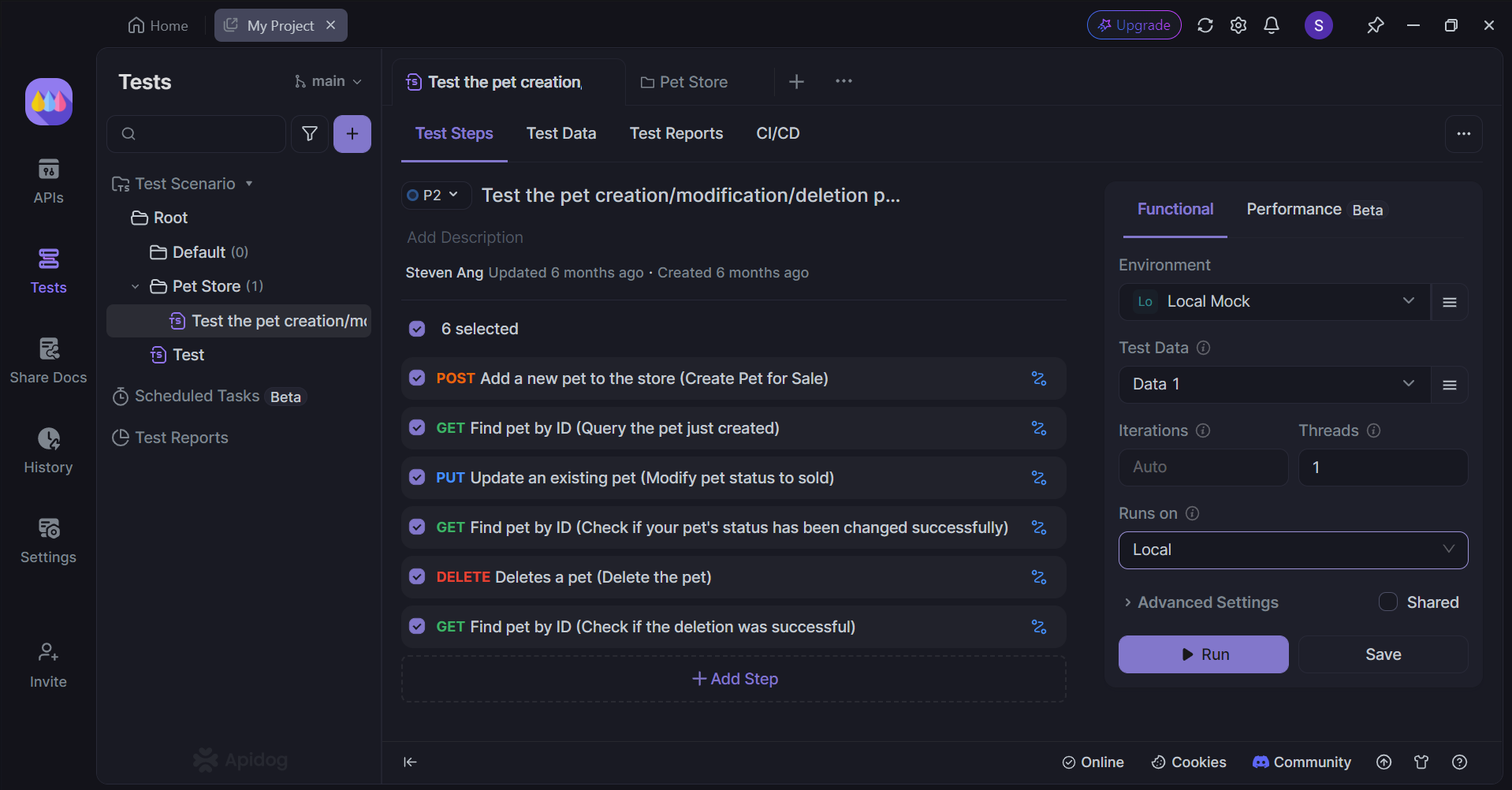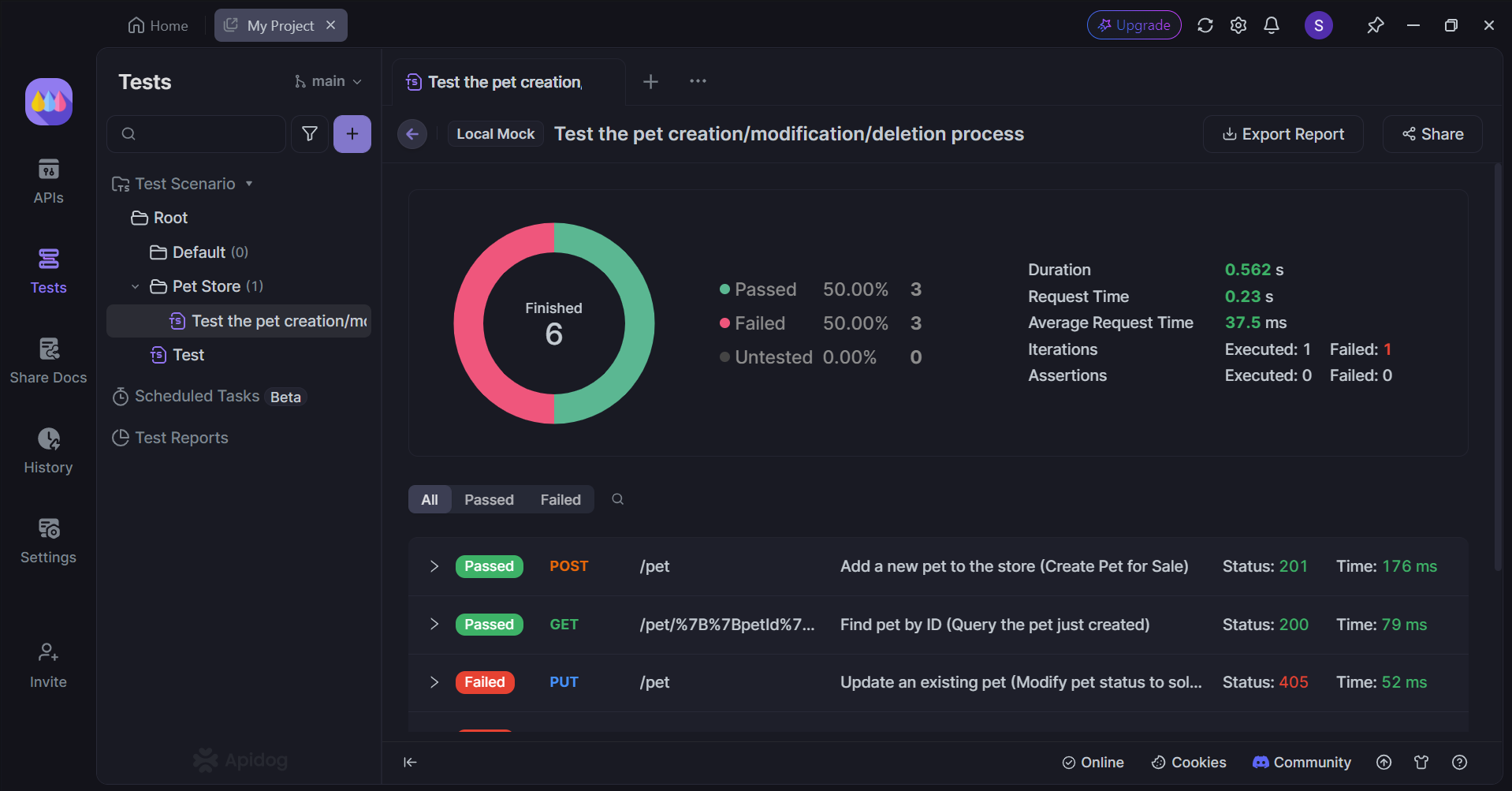Software development involves multiple testing phases to ensure a product's quality and functionality before its release to the public. Two critical stages in this process are Alpha Testing and Beta Testing. Both play distinct roles in product development, focusing on different aspects and involving different participants. This article explores the differences, objectives, and benefits of alpha and beta testing.
Apidog is a low-code API platform that provides developers with a simple and intuitive user interface for designing, testing, documenting, and mocking APIs.
To learn more about Apidog, check out the button below!

Alpha Testing
Alpha testing is an initial testing phase conducted internally within the organization. It is primarily focused on identifying major bugs, assessing system stability, and ensuring core functionalities work as intended.
Key Characteristics of Alpha Testing
- Controlled Environment: Alpha testing occurs in a restricted setting, often within the developer's premises or under their supervision. This controlled environment allows developers to simulate various scenarios and test the software's response to different conditions.
- Internal Participants: The testing is performed by a select group of internal stakeholders, including developers, testers, and product team members. These participants have access to the software's internal structures, enabling them to conduct both white-box (structural) and black-box (functional) testing.
- Focus Areas: The primary focus is on identifying and fixing critical bugs and issues that could affect the software's functionality, usability, performance, and stability1. This stage helps refine the software product by addressing problems not discovered during previous tests.
- Duration: Alpha testing typically involves longer execution cycles due to its iterative nature. It can take weeks or even months as issues are identified and resolved continuously.
Advantages of Alpha Testing
- Early Bug Detection: Identifying bugs early in the development process reduces the risk of major issues later.
- Improved Quality: By resolving issues during alpha testing, the overall quality of the software is enhanced before it reaches real users.
- Cost-Effective: Fixing problems during alpha testing is generally cheaper than addressing them post-release.
- Usability Insights: Provides valuable feedback on user experience, allowing improvements in usability and interface design.
Beta Testing
Following successful alpha testing, beta testing is conducted to gather real-world feedback from external users. It acts as a bridge between the development phase and market release.
Key Characteristics of Beta Testing
- Real-World Conditions: Unlike alpha testing, beta testing unfolds in real-world environments where users interact with the software under everyday scenarios3. This setup helps developers understand how the product performs outside controlled conditions.
- External Participants: Beta testing involves a larger group of external users who provide diverse perspectives on the product's usability and performance. These users are typically unaware of the system's internal structure, offering insights similar to those of end-users.
- Focus Areas: The focus shifts to broader aspects such as usability, user experience, performance, compatibility, security, and overall appeal to the target audience. It also helps catch any remaining bugs missed during alpha testing.
- Duration: Beta testing usually spans a few weeks. Its primary goal is to gather feedback quickly and identify broad concerns before finalizing the product for launch.
Advantages of Beta Testing
- User Feedback: Provides unbiased insights from real users that directly impact product development by highlighting hidden issues or suggesting improvements.
- Risk Mitigation: Helps stress test the software by identifying potential issues under sustained load or diverse user behaviors.
- Market Readiness: Ensures that the product aligns with market expectations and user needs before its official release.
Comparing Alpha vs. Beta Testing
| Aspect | Alpha Testing | Beta Testing |
|---|---|---|
| Environment | Controlled setting within the organization | Real-world conditions |
| Participants | Internal stakeholders (developers, testers) | External users |
| Focus | Major bugs, system stability, core functionalities | Usability, user experience, performance |
| Duration | Longer (weeks/months) | Shorter (a few weeks) |
| Feedback Type | Technical insights | User-centric feedback |
| Objective | Early bug detection and quality improvement | Market readiness and user acceptance |
Apidog - Comprehensive API Testing Tool
Apidog is a low-code API platform that is perfect for any developer that is currently working on a project that involves APIs.

Let's see how Apidog provides leverage for developers.
Apidog Test Scenarios
Apidog has a unique testing feature called test scenarios.


Apidog enables you to visually test several APIs in a sequence of consecutive steps. This method is especially useful for developers who have created a set of interdependent APIs to perform their tasks.
Apidog Test Scenario Results

Apidog will produce a detailed report on your test scenario, showing the number of successful and failed requests, as well as the total time required for all the APIs to run.
Individual API Endpoint Testing With Apidog

Apidog assists developers in testing individual APIs and viewing each response separately. Simply click the Run header, then press the Send button in that order.

Conclusion
Both alpha and beta testing are crucial components of software development that ensure a product's quality before it reaches end-users. While alpha testing focuses on technical validation within a controlled environment, beta testing emphasizes real-world usability and market readiness. Together, these stages help developers refine their products for a successful launch by addressing both technical issues and user experience challenges.

